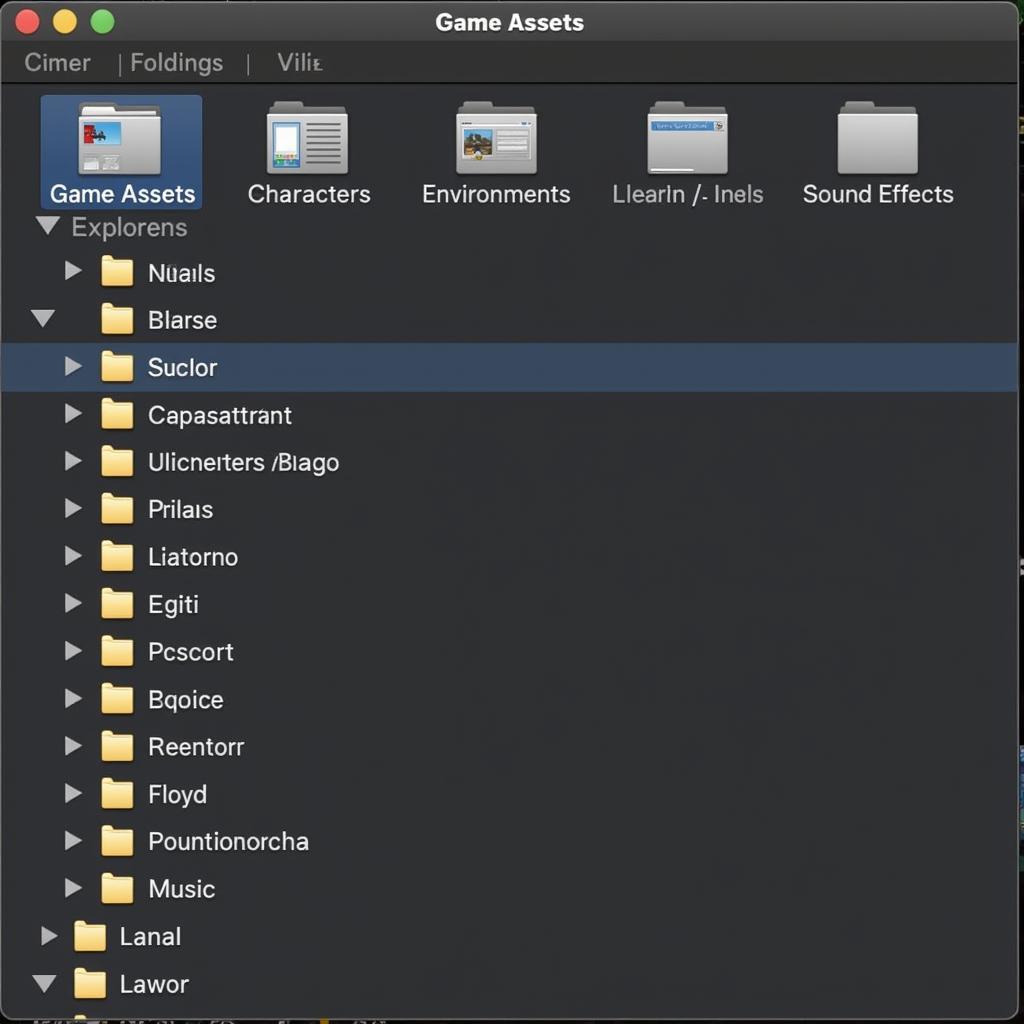Understanding how to navigate the world of APK updates, version control, and asset management is crucial for any Android user or aspiring developer. Whether you’re looking to access the latest features of your favorite game or optimize your app development process, understanding these interconnected concepts is key. This guide delves into the intricacies of APK updates, version assets, and the best practices for a seamless experience.
Decoding APK Updates: What You Need to Know
An APK (Android Package Kit) is the file format Android uses to distribute and install apps. Think of it as a package containing all the necessary files for an app to function correctly on your device. When developers add new features, fix bugs, or make significant changes, they release an updated version of the APK.
There are several reasons why you might need to update an APK:
- New features: Developers are always working on exciting new features to enhance user experience.
- Bug fixes: Updates often address and resolve bugs or glitches found in previous versions.
- Security enhancements: Updates frequently include patches for security vulnerabilities, keeping your device and data safe.
- Performance improvements: Updates can optimize app performance, making it run smoother and faster.
Navigating Version Control: The Significance of Version Numbers
Each APK comes with a version number, typically in the format X.Y.Z. Let’s break down what these numbers represent:
- X (Major Version): Indicates a significant update with substantial changes to the app’s functionality or user interface.
- Y (Minor Version): Represents smaller updates, such as new features or improvements to existing ones.
- Z (Patch Version): Denotes minor bug fixes or security patches.
Understanding these version numbers helps you gauge the scale of the update and its potential impact on your usage.
Asset Management in APK Updates: Keeping it Organized
“Assets” in the context of APKs refer to all the non-code components that contribute to an app’s functionality and visual appeal. This includes images, audio files, fonts, and other multimedia elements.
 Organized folder structure for game assets
Organized folder structure for game assets
Efficient asset management is essential for developers, especially when releasing APK updates. Here’s why:
- Reduced APK Size: Well-managed assets help keep the APK size manageable, ensuring faster download and installation for users.
- Improved Performance: Optimized assets contribute to smoother app performance and reduced loading times.
- Easier Updates: A structured asset management system simplifies the process of updating specific assets without affecting the entire app code.
apk dl download: Exploring Different Update Methods
There are primarily two ways to update an APK:
- Through Google Play Store (Recommended): This is the safest and most convenient method. When an update is available, you’ll receive a notification on your device, and you can update the app with a single tap.
- Manually Downloading and Installing the APK: This method involves downloading the updated APK file from a trusted source and then manually installing it on your device.
While manual updates offer more control, they require caution. Downloading APKs from untrusted sources can expose your device to security risks. Always verify the source and integrity of the APK file before installation.
Best Practices for Seamless APK Updates
Whether you’re a user or a developer, here are some tips for a smoother APK update experience:
- Enable Auto-Updates: Allow the Play Store to automatically update your apps for a hassle-free experience.
- Connect to a Stable Network: Ensure you’re connected to a reliable Wi-Fi network before initiating larger updates to avoid data charges or interruptions.
- Back Up Your Data: While rare, updates can sometimes cause data loss. Backing up your important data before updating is always a good practice.
For developers, consider these additional tips:
- Thorough Testing: Rigorously test updates on various devices and Android versions to ensure compatibility and stability.
- Clear and Concise Changelog: Provide users with a detailed changelog outlining the changes and new features in each update.
- Phased Rollouts: Consider releasing updates in phases to monitor for potential issues and gather user feedback.
Conclusion
Understanding APK updates, version control, and asset management is essential for navigating the ever-evolving Android ecosystem. By following the best practices outlined in this guide, you can ensure a seamless and secure experience, whether you’re updating your favorite apps or developing innovative new ones. Remember to prioritize official app stores for downloads and always prioritize the security of your device.
FAQs
Q1: What is an “Apk Update Version Asset”?
A: While not a standard term, it refers to the combination of updating an APK (Android app package), managing its version number, and handling associated assets like images and sounds. Essentially, it’s about ensuring the app is up-to-date and its components are well-organized.
Q2: Is it safe to download APKs from third-party websites?
A: It’s generally riskier than using the official Play Store. Stick to reputable sources if you must, and always scan downloaded files with antivirus software.
Q3: What if an update causes problems with my app?
A: Try clearing the app’s cache and data first. If the issue persists, you can often find an “Uninstall updates” option in your device settings to revert to the previous version.
Q4: Can I use older versions of apps even if there are updates?
A: Sometimes. The Play Store usually only offers the latest version, but some websites archive older APKs. However, using outdated versions might lack features or have security vulnerabilities.
Q5: What should I do if an app update keeps failing?
A: Check your internet connection, available storage space, and ensure the app is compatible with your Android version. Rebooting your device or clearing the Play Store cache/data might also help.
Need More Help?
For any further assistance, feel free to contact us.
Phone Number: 0977693168
Email: [email protected]
Address: 219 Đồng Đăng, Việt Hưng, Hạ Long, Quảng Ninh 200000, Việt Nam.
We have a dedicated customer support team available 24/7 to assist you.